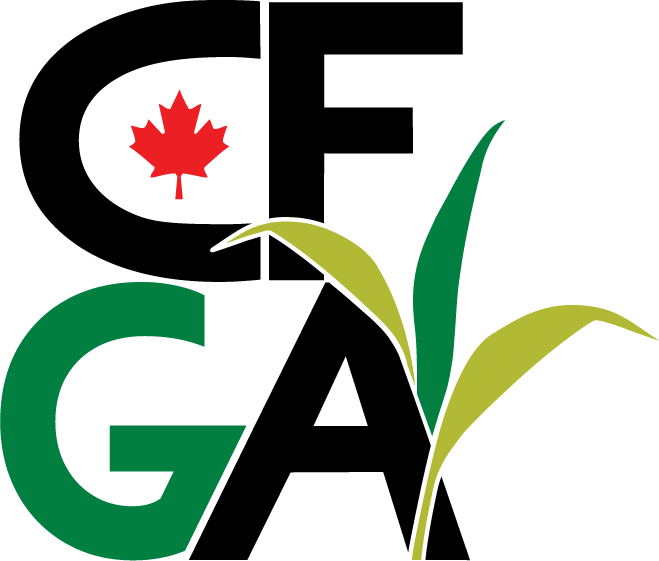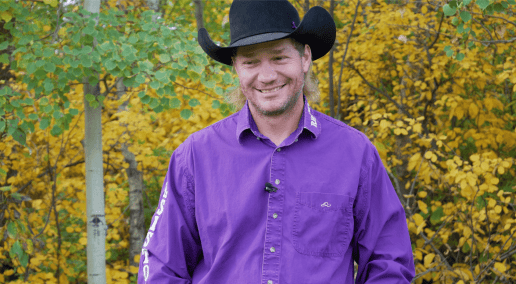During the session, Understanding the Barriers and Motivations to Adoption of Conservation Agriculture, Adam Reimer from the National Wildlife Federation presented different barriers in the adoption of conservation practices.
His presentation looked at different types of conservation practices as well as the barriers and adoption process of these practices. He discussed infield practices and edge-of-field practices. Infield practices include maintaining soil health, reduced disturbances in field, the use of cover crops and managed grazing. Edge-of-field practices include drainage systems, riparian buffers and wetland management.
There is no one set of factors that explains the decision-making behind each case but, through this session, Adam helped build an understanding of the barriers behind adopting conservation practices. Adoption happens at different scales and faces different barriers at each level. Adam discussed three levels of barriers in this session: farm-level barriers, community-level barriers and macro-level barriers.
- Farm-level barriers include the farmers’ individual values, goals and experiences.
- Community-level barriers include the local policies, neighbours and market needs.
- Macro-level barriers include commodity production, international markets and major policies.
Barriers and motivations
The rest of this session aimed to understand the barriers and motivation of adoption by farmers.
Environmental awareness plays a large role in convincing people to adopt these practices. The awareness of the positive impact they create, the knowledge of different practices farms can use and the local environmental quality can all promote conservation practices.
Information sources are important within this process. They help develop public agency over environmental destruction. Climate change-focused events, universities, seed conservation organisations and the affiliation with local organisations are different methods that can educate the public on environmental conservation.
There are available government programs to help farmers with the cost of these practices, to give technical assistance during implementation and to build familiarity with programs and agencies.
Structural systems like market structures, policy/trade interactions and tenure / landowner contracts affect this process.
Land tenure plays a role in the implementation of many conservation practices. Tenure security and length and tenant/landowner relationship all affect the capability of implementation. A farmer that is secure in land access is more likely to adopt conservation practices.
Economic factors play a role in the adoption of conservation practices. For example, the farm’s capital and income, marketing capacity and crop yield are all important economic factors that impact if a farm has the financial capability to adopt these practices.
Social norms can affect the adoption of these goals as well. If others aren’t adopting these goals people don’t feel inclined to join in. We need people to be the leaders in this movement to encourage the whole. Farmers will find a sense of place through these movements and in turn encourage others to join in. Social factors like injunctive norms (behaviours that one is expected to follow and expects others to follow in a given social situation), trusting government agencies and collective networks can either lead to improve or lessen adoption rates, depending on the people’s communities.
There are many different types of agricultural systems that play a role in the adoption process. Farm factors like farm size, diversity of livestock and livestock integration and environmental vulnerability affect each farm’s ability to use conservation process. Farm management plays a role in the adoption process. For farmers to adopt new practices they need to be compatible with the farm’s current systems, thinking and management experience.
Adam wrapped up his session noting that farmer factors also affect the likelihood of adoption although this is very case dependent. These include if they have a formal education, off-farm employment and their age range, alongside a range of other factors that affect the individual goals of each farm.
Conference 2023
The CFGA is excited to announce that its 14th annual conference will take place Nov. 28 to Dec. 1 in person in Harrison Hot Springs, BC. This year’s conference theme is Forage Resilience in a Changing Landscape: Manage risk. Overcome challenges. Discover opportunities and we look forward to delivering the interesting and informative sessions the CFGA conference is known for. Please save the date to join us as we learn about issues facing the forage sector and how they overcome these challenges, as well as take a look ahead to opportunities. Watch the CFGA conference website for more information.
Back to Most Popular



Leave a Comment